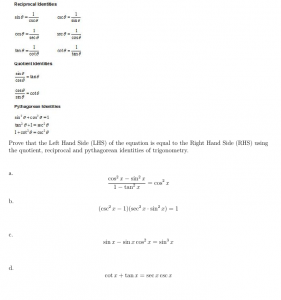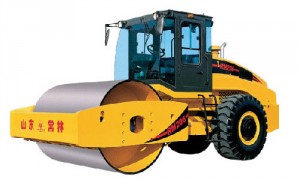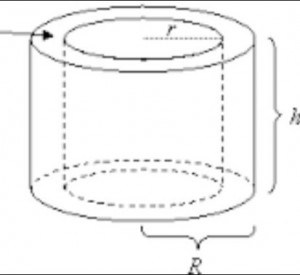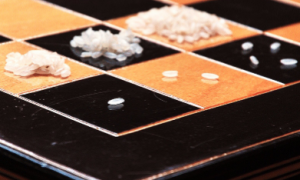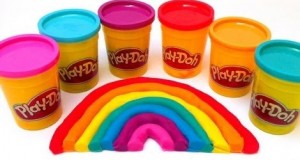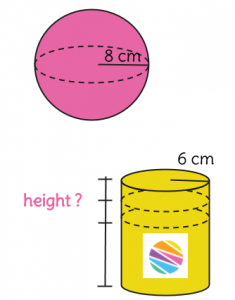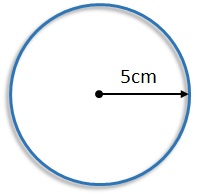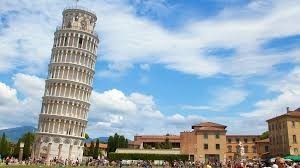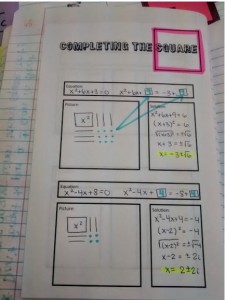Attached are the assessment commentary and solutions.
Assessment of CCSS-Math
Discussion the summative and formative assessment of 5-11 grade of assessment of CCSS-Math.
Calculating Cost of Wheels HSG.GMD.A.3
A construction company is designing new road rollers. The wheels of each road roller are made out of steel. The wheels are designed in a cylindrical shape in addition to having a smaller cylinder cut out of the center for the axel to fit through as shown in the picture below. The radius of the larger cylinder measures 2 ft., the radius of the cut-out cylinder measures 0.5 ft., and the length of the wheel measures 6 ft. From the diagram, this would mean R = 2 ft., r = 0.5 ft., and h= 6 ft. If the cost of steel is $2.40 per cubic foot, what is the cost of the steel to construct one wheel? Show your calculations and round your answer to two decimals.
To view an assessment commentary and solution, follow the link below.
How Much Rice?! HSF.LE.A.1.C
In a small village in China there was a peasant girl who was in the right place, at the right time and she ended up saving the life of the Emperor. The Emperor was so grateful to the girls that he told her she could have any reward she desired. This particular girl also happened to be an excellent chess player and she made the following request.
“I would like you to place one grain of rice on the first square of a chessboard. Two grains of rice on the second square, four on the third square, eight on the fourth square, and so on, until you have covered all 64 squares. Each square should have twice as many grains of rice as the previous square.”
The king thought, no problem, a few grains of rice is no great loss for the kingdom. So he asked the girl, are you sure you don’t want something a little more valuable? But the peasant girl insisted, no this is plenty.
How many grains of rice would the king be giving the peasant girl by the time all the squares are filled?
Can you write an equation to represent this scenario?
CCSS.MATH.CONTENT.HSF.LE.A.1.C
Recognize situations in which a quantity grows or decays by a constant percent rate per unit interval relative to another.
CCSS.MATH.PRACTICE.MP4
Model with mathematics.
This lesson is very engaging because it starts off with a folktale which can grab the student’s attention. This lesson can also be even more engaging by actually bringing in chessboards and rice and have the students model this activity until they get to the point where they realize, they don’t have enough room on the board to fit all of the rice. At this point the students should also be able to recognize that this is representing an exponential function and they can be challenged even further by trying to write a function to represent the scenario.
GMD.B.4-Play Time with Play-Doh
There is something very therapeutic about playing with play-dough. All children of all ages whether they admit it or not enjoy playing with play-dough and what better than to incorporate it into learning math. Using playdough in a subject that stresses many students can be very beneficial and making visualizing math concepts making the problems easier to approach.
For example, given the high school geometry standard:
Use volume formulas for cylinders, pyramids, cones, and spheres to solve problems.*
Allowing students first to try the problem hands on will work on engaging the students and with the visualization solving the problems will become less of a stressful situation. And from this, we can create other similar problems in which the shapes the problem works with changes. Such as what could change if we had a pyramid shape of play-dough that needed to fit into a cone shape container.
Going, going, GONE! HSF.TF.A.4
If you’ve ever played golf, when your on the fairway and you have a large distance to cover, you grab your lowest iron in the bag because the 3-iron has the lowest angle which will produce the largest horizontal distance. Similarly, if you want to get the largest vertical distance, you’ll grab a wedge with the higher angle. Using the Vernier projectile launcher, this activity will task students to use knowledge of the unit circle and cos/sin functions to verify their calculations of which angles will produce the largest horizontal/vertical distances for projectile motion. Teacher has flexibility of changing concept of cannon in activity to any projectile motion that comes to mind. A few are golf, baseball, soccer, a cannon, throwing rocks into the river, etc.
Deriving Quadratic Models From Gathered Data: Building Functions F-BF
Above is a link to a lesson plan I created revolving around the use of modeling and technology. The technology uses are stop watches and video recorders. The main technology focus is the use of the video recorders where students will use them to document their work. Students will create models during the activity which will represent the data collected from their experiments of dropping bouncy balls and calculating time between two bounces and the max height in between those two bounces. If stop watches are not available then you can measure the distance between the two bounces instead.
7.G.B.4,6 and 8.G.C.9: Volume and Surface Area
This learning progression is designed for a high school Applied Geometry course in which the students have access to computers. The Common Core State Standards that align with this learning progression are: 7.G.B.4, 7.G.B.6, and 8.G.C.9. The reason that we combined 7th and 8th grade standards is because the students need a chance to review and solidify their understanding of the basics of area and volume but also be challenged by having to find real-world applications. The students will also be assessed on the following standards of mathematical practice: MP4; model with mathematics, MP6; attend to precision, and MP7; look for and make use of structure.
The unit will begin with a discovery based lesson about pi. The students will be required to partner up and measure the circumference and diameter of two different objects. Each partner will be assigned different circular objects. There will be a master list at the front of the room that the students can record their measurements on and then write what the circumference/diameter of their objects was. The purpose of this lesson is to show the students that, no matter what the size of the circle, if they take the circumference/diameter of their object they will get approximately 3.14, or pi. By realizing this pattern, the students are looking for and making use of structure (MP7). The students will also be required to graph the data, with the circumference of the objects being represented on the y-axis and the diameter on the x-axis. This will create a relatively linear line. The students will then be asked to identify the slope of this line, which will be 3.14. Finally, the students will be required to answer some questions in order to elicit further evidence of their understanding. Some of the questions that will be asked are:
1. What is the average ratio of circumference to diameter?
2. What observations did you make?
3. Can you derive the formula for circumference of a circle by knowing Pi is the ratio of diameter to circumference?
After the students understand the origin of pi, they will be required to use the concept of pi to find the area of circles. They will also learn how to find the surface area and area of rectangles and triangles and their respective 3-D prisms. Finally, the students will learn what the difference is between surface area and area. They will be asked what real-world applications that are related to area and surface area. In using the equations to correctly calculate volume and surface area, the students are attending to precision (MP6). The students will be formally assessed via a worksheet. Problems on this worksheet include
1. Find the surface area of the origami figure you made in class
3. What do you notice about the shapes of a cylinder when calculating surface area?
Once the students understand how to find the area and surface area of these basic objects, they will move on to finding both surface area and volume of more advanced objects such as pyramids, cones, spheres, triangular prisms, cubes, and cylinders. The students will be provided with a list of the necessary equations to know. The purpose of this lesson is for the students to be able to apply the given formulas and to identify how volume and surface area apply to the real-world. In order to allow the students to practice the equations for finding the volume and surface area of these objects, they will use Google Earth. The students will download the Volume of Solids kmz file from realworldmath.org. They will then follow the directions to virtually travel the world and find the volume and surface area of different buildings in different countries. The program itself will give the necessary dimensions for the equations. By having the students find real-world applications of volume and surface area, they are modeling with mathematics (MP4). The students will record their work and answers on a worksheet that they will be given. One of the questions on the worksheet looks like this:
Leaning Tower of Pisa
Volume:
In order to assess the students ability to connect this lesson to the real world, they will also be asked on their worksheet “In what career would you use volume and surface area? Why do you think that?”. This is an important question since the main purpose of this lesson is to get the students to realize the real-world applications of volume and area.
Learning Progression: LearningProgression
Discovering Pi lesson plan: discovering pi
Area and Surface Area lesson plan: LP Area
Google Earth Volume and Surface Area lesson plan: GeoMath lesson plan
REI.B.3 & 4: Quadratic Formula, Completing the Square, and Factoring. Oh my!
Just like Dorothy, the Tin Man, and the Scarecrow were scared of lions, and tigers, and bears in the Wizard of Oz, 10th grade students will most likely be scared of solving quadratic equations by completing the square, the quadratic formula, and factoring. However, through proper instruction, enough practice, and effective formative assessments, solving linear equations and inequalities and quadratic equations will be nothing to worry about.
This learning progression would be taught in a beginning 10th grade algebra classroom. The Common Core State Standards that will be addressed are HSA.REI.B.3, HSA.REI.B.4.A, and HSA.REI.B.4.B. Additionally, MP.4, MP.6, and MP.7 are the mathematical practice standards that align with this learning progression.
Since this is such a dense Common Core cluster, there will be four lessons that make up this learning progression. Students have previously learned what equations and expressions are and how they are different, how to categorize polynomials, steps to solving simple linear equations, and how to graph linear equations. The progression will begin by teaching the students how to solve more advanced linear equations and inequalities. This lesson may take a couple of days depending on how advanced the students are. The students will learn how to graph inequalities and how to attend to precision in writing their answers and labeling their graphs. For the second lesson, students will learn what completing the square means and how it is useful in finding roots of quadratic equations. Each time they complete the square, they will be required to draw a picture to show how they came up with the number that they are adding to both sides. An example of a problem on their worksheet, which is used as their formative assessment for this lesson, is provided below. Once students understand how to complete the square, they will move on to the third lesson and will learn what the quadratic formula is, how it is used, and how it can be derived from completing the square. Finally, the fourth lesson entails teaching students how to factor a quadratic equation when the leading coefficient is 1. By using frequent formative assessment techniques such as worksheets, class activities, and exit slips, the students and the teacher will both be able to track the students’ progress towards the learning targets.
The equations will be written on the board and the students will copy them from the board onto their equation box. They will then complete the picture and solution. They will have 4 pages scaffolded like the worksheet shown on the left. Picture taken from http://mathequalslove.blogspot.com.au/2015/05/algebra-2-solving-quadratics-inb-pages.html
Learning Progression: Learning Progression
High School: Calculus Modeling a Population Model

This learning progression will be applied to a high school calculus classroom, normally for 12th graders, that uses Khan Academy as a reference for the curriculum. The following Common Core State Standards aligned with this progression are HSF.LE.A.1.c and HSF.LE.A.4. The standards for mathematical practice that will be used are MP1: Make sense of problems and preserve in solving them, MP4: Model with mathematics, and MP6: Attend to precision.
The students have had experience with finding the derivative and integral of a function. They have been introduced to the rules of integrating a function that produces a natural logarithmic equation. This learning progression will build on this knowledge by applying this specific type of function to modelling a population. This will build an understanding of the real-world applications of logarithmic functions and where they come from. The students will be working cooperatively in groups on example problems to further their own ability of the procedural steps of integrating. This lets the students communicate with their peers so that they can continue to increase their knowledge with discussions about each of the practice problems. Although most of the progress requires the students to work cooperatively, the final portion will be assessed on how well each individual student understands the concept and procedures. This is displayed in a final activity where each student must model a population by integrating by parts of a function.
Algebra 1: Exploring Linear Functions

This learning Progression is for an Algebra 1 Class The curriculum used in this class is called Agile Mind which consists of a workbook, online animations, and formative & summative assessments. The name of this workbook is Intensified Algebra I: Student Activity Book, Volume I Representing mathematical relationships: the graders Linear Functions and their foundations, 2015-16 Edition. The math workbook has a guided lesson notes (fill in the blank) that follow the online animations that concur with the lesson, homework assignments, and a staying sharp section.
The book based on the agile mind curriculum. This curriculum is built for students and for teachers who preferred formative assessments, job-embedded professional supports and real-time data & reports. Curriculum was made for middle school students and high students. The Common Core State Standards cluster that this learning progression uses are as follows: Functions: 8th grade Define, evaluate, and compare functions:
- CCSS.MATH.CONTENT.8.F.A.1
- CCSS.MATH.CONTENT.8.F.A.2,
- CCSS.MATH.CONTENT.8.F.B.4
- CCSS.MATH.CONTENT.8.F.B.5.
These standards in Algebra address:
Unit 4: Linear Functions, Topic 10: Understanding slope and intercepts, will be the learning progression. This unit will reinforce the vocabulary, and analyze of linear functions using strategies and routines used in class. Topic 10 will connect the
ideas of rate of change with the slope of a line. The use of different representations such as graphs, tables, function rules, and verbal expressions will be an essential part of 3 lesson learning progression.
The themes with in these three lessons (10.1-10.3) are as follows:
- Practice of using graphs, tables, and function rules to analyze a linear function.
- Discover the connection between rates of change versus slope and use it to analyze a linear function.
- Use first differences to determine whether a function is linear or not.
- Explore the difference between an x-intercept and y-intercept and see how it is represented in a graph.
- Learn how to determine whether a line is parallel
Linear Equations is one of the most essential lessons in the Algebra 1 curriculum. Emphasizing the retention of the concepts learned in this lesson is essential for the successful progressions for the rest of the mathematics sequence in high school. Formalizing a vocabulary and algebraic processes involving & analyzing attributes of linear functions will be the goal of this learning progression. In addition, Mathematical practices will be compacted in the following lessons. These are the mathematical practices being used in the previous learned strategies and routines that students will be developing will enhance the learning of the students. The Mathematical Practices are as follows:
Link to Common Core Standards: http://www.corestandards.org/
